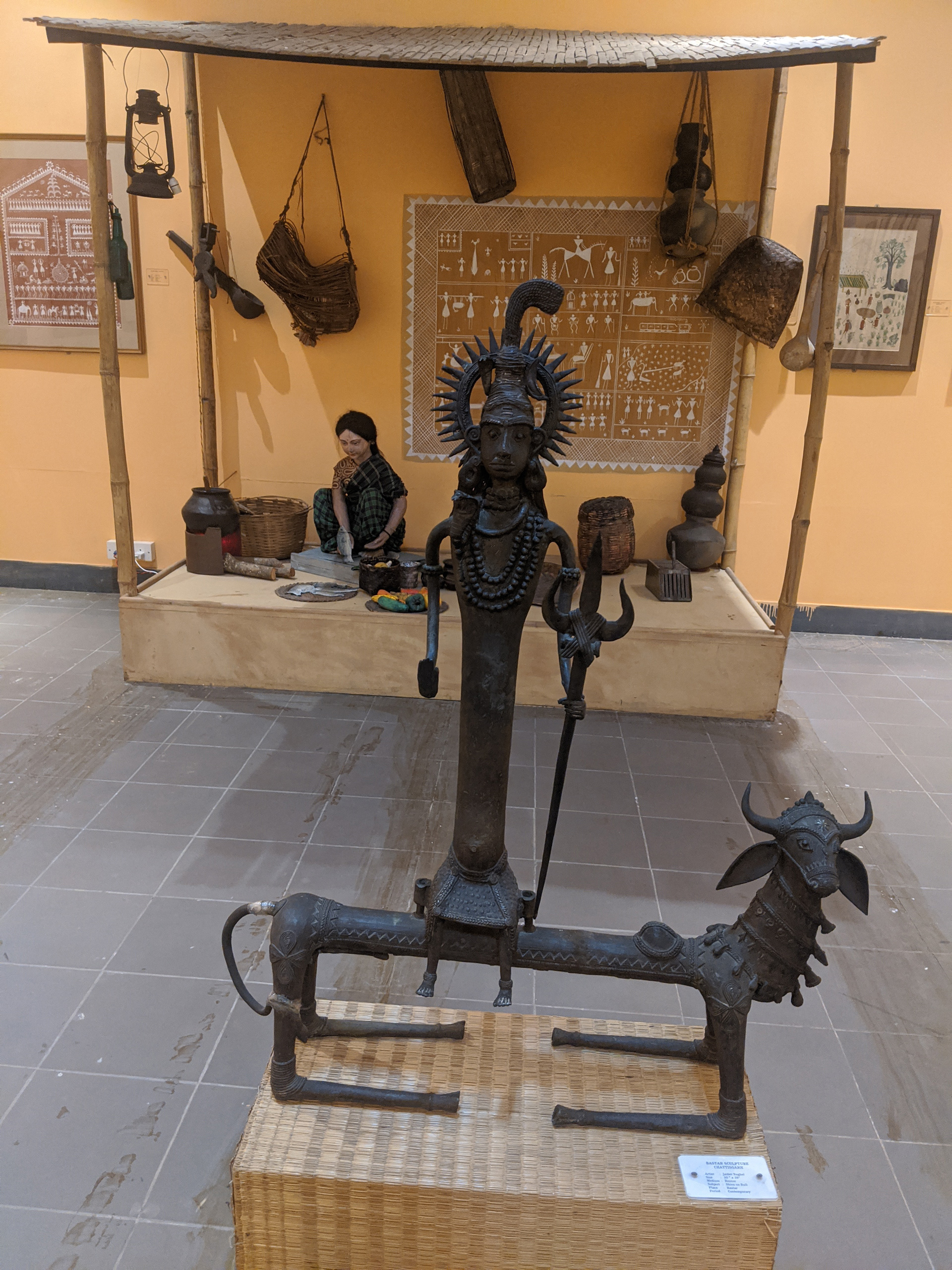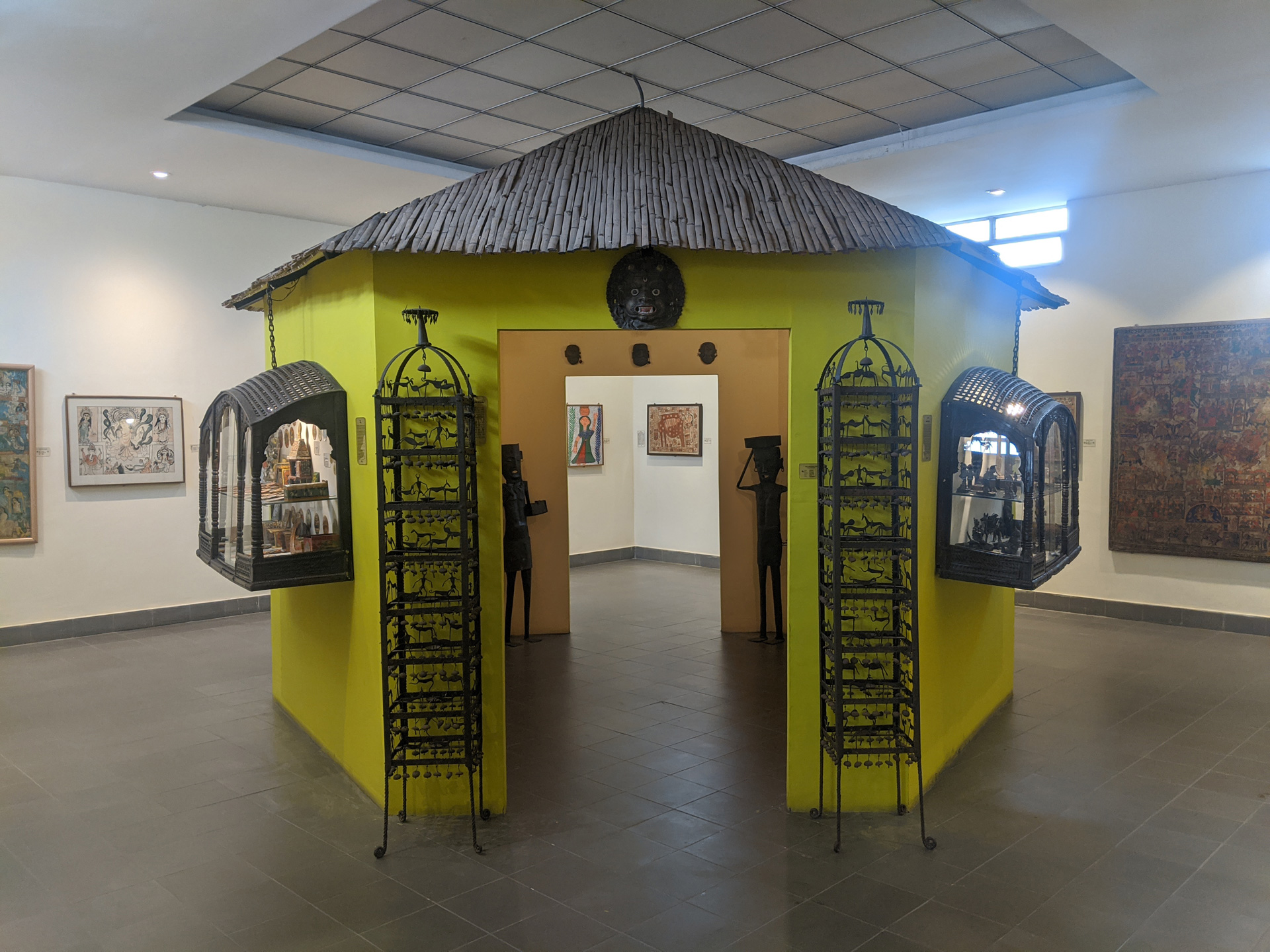PERMANENT MUSEUM COLLECTIONKejriwal Folk Art Museum

The Folk Art Gallery houses leather and string puppets, Chamba rumals from Kangra and Chamba, Kathi embroidery from Gujarat, Kantha art and folk art paintings from West Bengal, Maharashtra and Tamil Nadu, Ganjifa cards, Gond tribal paintings, artefacts from Bastar and Nagaland and many others. The collection focuses not only well-known practices but also some relatively unknown tribal art forms as well. There are pieces of utilitarian art and also ritual art and objects. A number of folk communities and tribes around India have been able to preserve their own artistic traditions; this is despite situations of urbanization and commercialization that are causing the loss of artistic traditions.


One can view, under a single roof, leather puppets of Karnataka, the Worli paintings of Maharashtra, folk paintings of Tamil Nadu, pithoras made by Rathwa, Bhil, and the Saura tribes, Assamese folk art, Naga wooden sculptures, kathis of Gujarat, Santhal art, Gond tribal paintings, Bastar folk art, Madhubani paintings, patachitras from Orissa, Kurumba tribal art, Khonde sculptures, Meena tribal paintings, Phad paintings, patha paintings of Kumaon, reverse glass paintings, mica paintings, besides astrological scrolls, masks, ganjifas, dolls and embroidery work. There are also a large number of sculptures manufactured by the ghadwa metal casters of Bastar. These are cast using the lost wax process and consist primarily symbolic offerings and representation of local Gods. In addition to these there are items of Utilitarian and ornamental value. Additionally, a few tableaus represent village settings and natural environments of the tribes.
